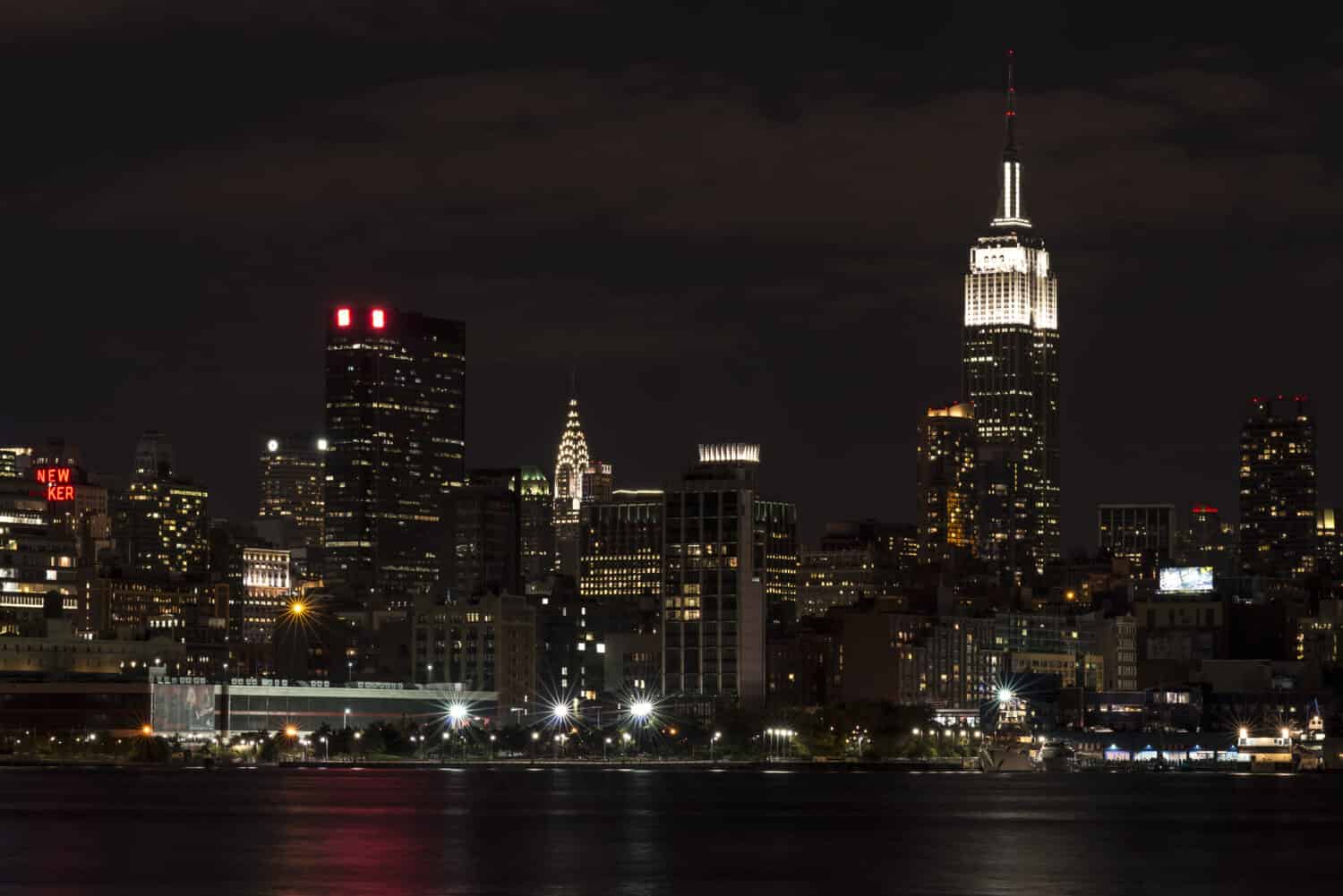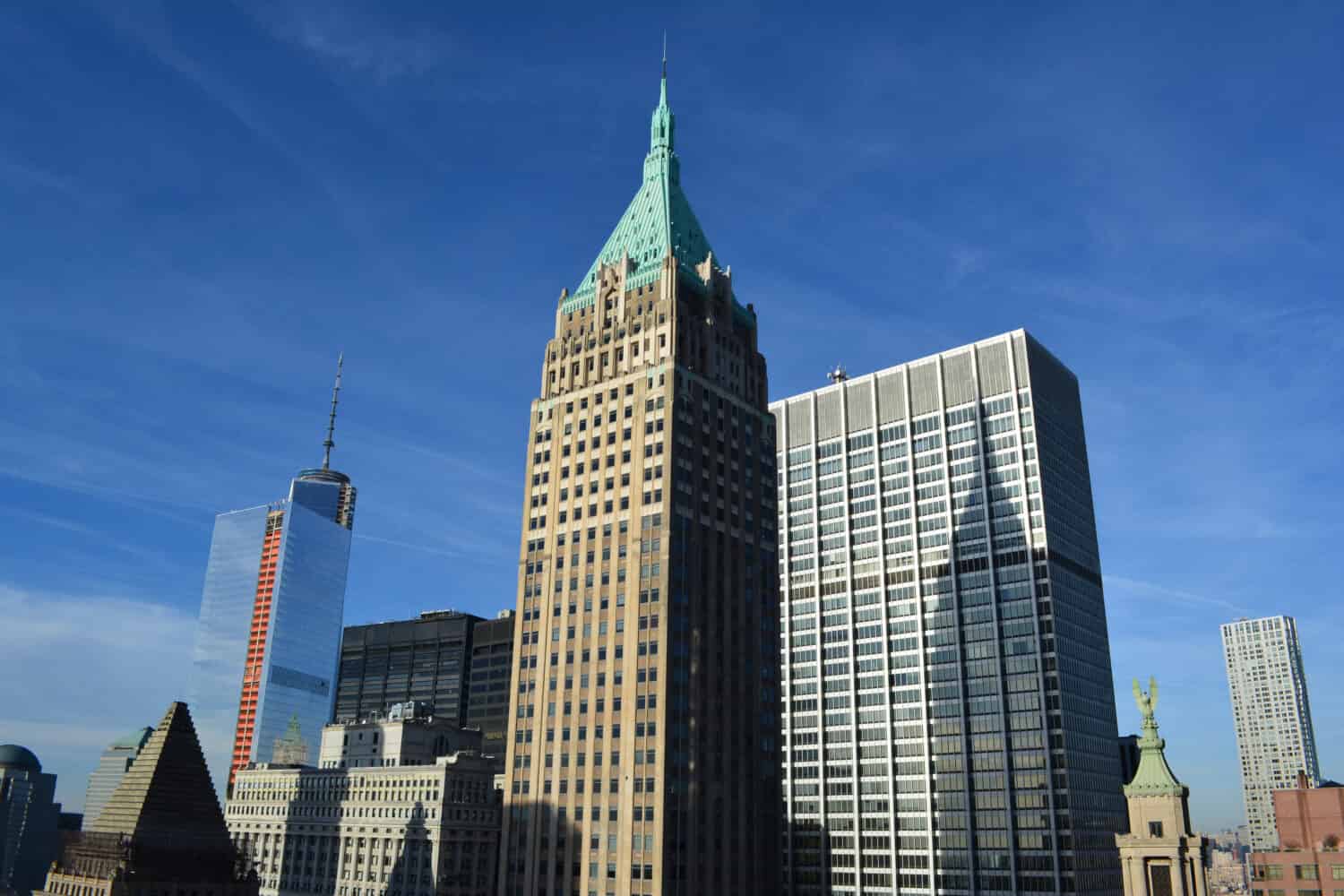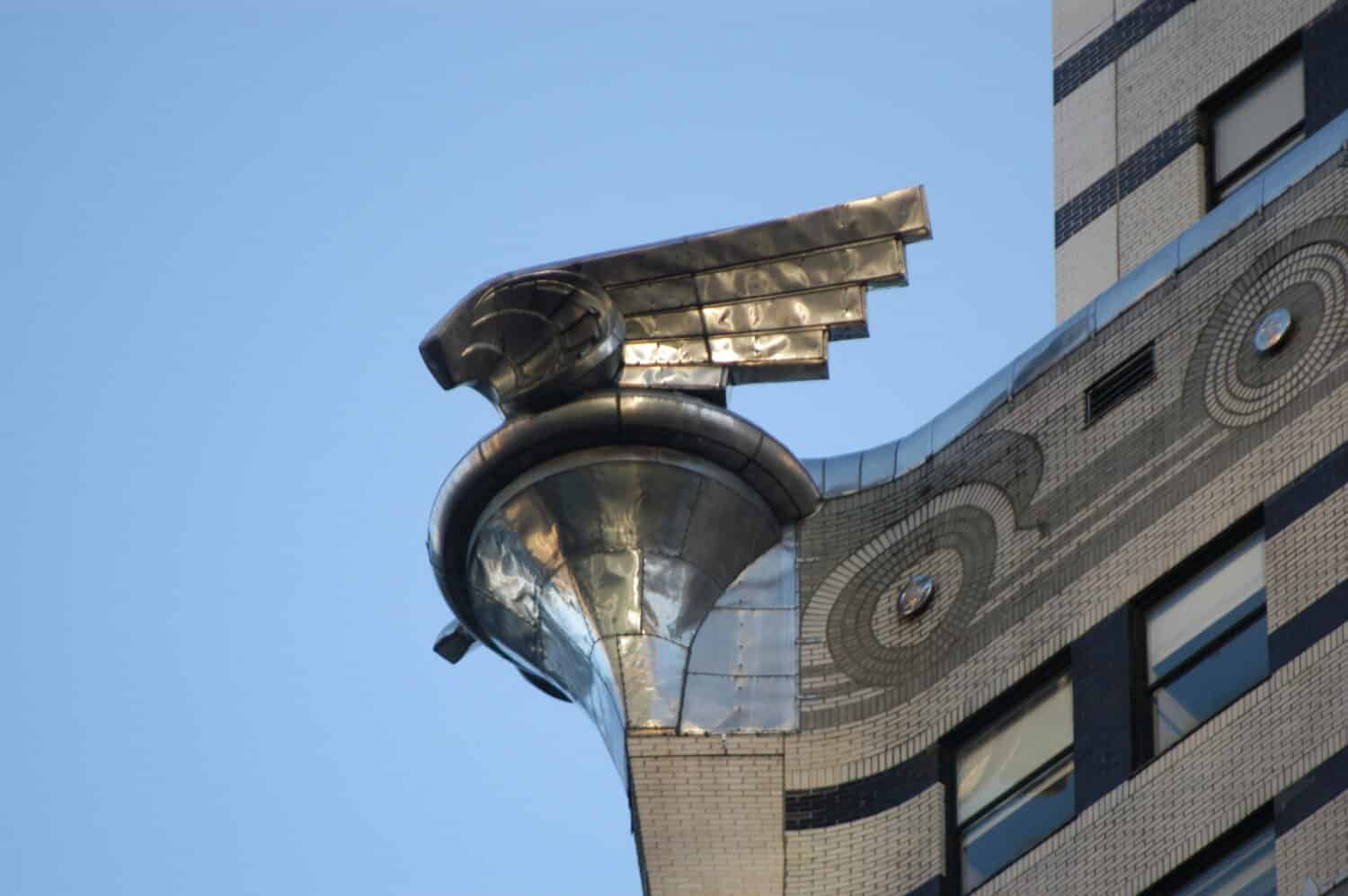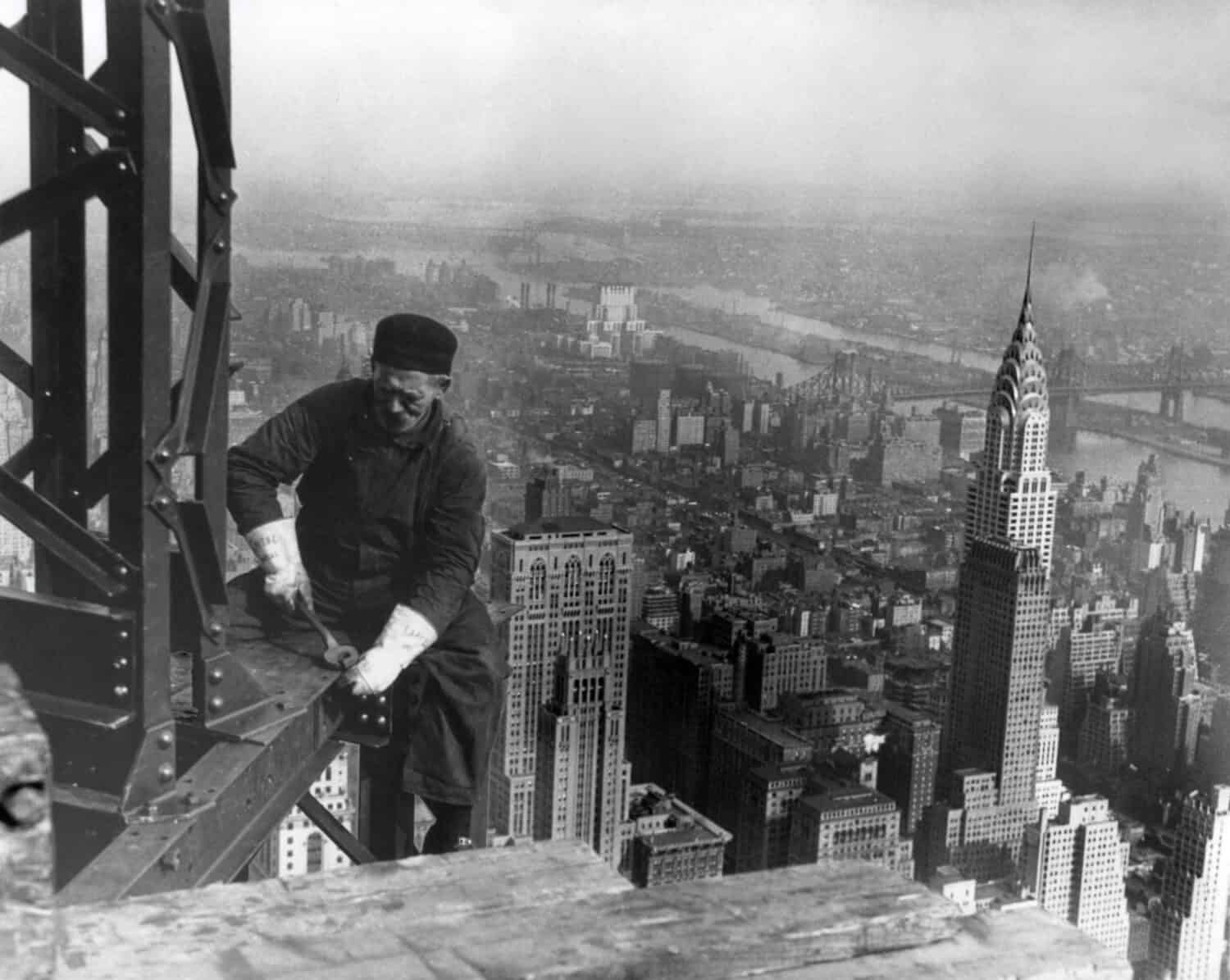New York City has the most identifiable skyline in the world. While Paris sports the Eiffel Tower and Dubai, the world’s tallest buildings, many of NYC’s skyscrapers have become iconic monuments to human determination, imagination, and ingenuity. While the Freedom Tower in lower Manhattan — built where the World Trade Center once stood — is a symbol of American resolve, the Empire State Building and the Chrysler Building are, perhaps, the most recognizable buildings in the city, if not the world.
Workers finished both in the 1930s when New York, like the rest of the nation, was in the maelstrom of the Great Depression. In 1928, a year before the economic calamity, the founder of the Chrysler car company, Walter Chrysler, came to New York and hired architect William Van Alen to design the automaker’s new corporate headquarters on Lexington Avenue. Alen originally planned 40 floors but kept adding more, hoping to build the tallest building in New York.

The Chrysler Building (left) and the Empire State Building (right) light up the night sky.
©Michael Cola/Shutterstock.com
A Rich Man’s Game
Yet, Chrysler wasn’t the only rich guy building skyscrapers. George Ohrstrom was building a 64-story, 927-foot high structure at 40 Wall Street for the Bank of Manhattan — a direct challenge to Chrysler. Ohrstrom began construction in 1929. As both men set about designing and building, a wealthy financier named John Jakob Raskob entered the race. Raskob helped General Motors become an economic juggernaut and, at the dawn of the Great Depression, was one of the nation’s wealthiest men. Raskob decided to challenge Chrysler and Ohrstrom with what would become the Empire State Building.
By the time construction began on the Empire State Building in 1930, work on the Chrysler Building and 40 Wall Street was well underway. All three looked to dethrone the Woolworth Building as the highest structure in Manhattan. To that end, Alen continued designing as crews worked. His most dramatic do-over was the Chrysler Building’s crown. At first, Alen envisioned a short and rounded dome. He eventually redesigned it to make the top longer and sleeker. That dome, with its sunburst design, is still one of the most recognizable features of New York’s skyline.

For a brief moment, 40 Wall Street in Lower Manhattan was the world’s tallest building.
©Christopher Penler/Shutterstock.com
A Spire to the Sky
Yet, every time Alen added extra height, Ohrstrom’s architect did the same. 40 Wall Street eventually topped off at 927 feet and held the world’s tallest building title for a brief time. Alen added a few more feet when workers secretly built and installed a 125-foot spire to sit atop the newly redesigned dome. Known as the vertex, the spire helped the Chrysler Building reach 1,046 feet when it opened on May 27, 1930, eclipsing the 40 Wall Street, the Woolworth Building, and even the Eifel Tower, which at the time was the tallest human-built structure in the world. The New York Times wrote a short story the day after stating that “Walter P. Chrysler was the guest of honor at a luncheon,” which included local dignitaries and former governor Alfred E. Smith.
The Chrysler Building was beyond jaw-dropping. Van Alen designed it in the Art Deco motif inspired by Chrysler’s automobiles. Gargoyles and eagles on the building’s façade, for example, simulated hood ornaments. Alen’s design is also replete with different geometric patterns and other automotive features such as hubcaps, radiators, and fenders.

Designed in the Art Deco style, the Chrysler Building, one of NYC’s iconic skyscrapers, is adorned with gargoyles representing a car’s hood ornament.
©Dirk Paessler/Shutterstock.com
Empire State Building Rising
Chrysler’s building kept its title as the tallest for only a few months. On May 1, 1931, construction on the Empire State Building ended. It took workers only 410 days to successfully build the largest building in the world.
At the time, The New York Times put the story on its front page. A smaller article inside the paper had this to say about the city’s newest structure and what the future might hold for other skyscrapers: “While engineers say that a height of 1,200 feet is feasible from a structural standpoint…other considerations make it unlikely, they report, that such a height will be reached within the near future. Realty men agree that the office skyscrapers of today have approached the limit of economic practicability in height.”
Interestingly, most of the building sat vacant for nearly two decades, leaving cynics to call it “The Empty State Building.” The Empire State Building has played an outsized role in American culture. It is routinely used as a backdrop for Hollywood movies, including the 1933 classic King Kong.

With the Chrysler Building looming in the background, it took workers 410 days to build the Empire State Building, which held the distinction of being the world’s tallest building until the 1970s.
©Everett Collection/Shutterstock.com
Tale of Two Iconic Buildings
How do the iconic skyscrapers Empire State Building and Chrysler Building compare? Here are some statistics.
- Height: 1,250 feet, 1,454 when counting its spire and antenna
- Floors: 102
- Cost: $41 million
- Materials: steel, limestone, granite, brick
- Amount of Steel: 60,000 tons
- Amount of Granite and Limestone: 200,000 cubic feet
- Amount of Bricks: 10 million
- Number of Lightbulbs: 3.19 million
- Cool Fact: In 1945, a B-25 bomber slammed into the 79th floor, resulting in little damage to the building.
- Height: 1,046 feet
- Floors: 77
- Cost: $20 million
- Materials: steel, brick
- Amount of Steel: 20,961 tons
- Number of Windows: 3,862
- Number of Lightbulbs: 10,000
- Number of Rivets: 3.8 million
- Cool Fact: Chrysler never paid Alen for his work.
The photo featured at the top of this post is © iStock.com/Shooter_Sam
Thank you for reading! Have some feedback for us? Contact the AZ Animals editorial team.







